Disclosure: This post may contain affiliate links. I earn a small commission of product sales to keep this website going.
I see a lot of statements in forums and get questions here that overcomplicate focal length. This post will explain what focal length is, including the relationship between focal length and field of view, conversions for different sensor sizes (crop factor), and how aperture relates to focal length.
Even with all of this information, in the end, you’ll see the only thing you really need to understand when it comes to focal length and different sensor sizes.
Defining focal length
What exactly is focal length?
Let’s start with how light is focused in a lens.
The light from the scene in front of you will be reflected into your lens. That light is going to pass through different pieces of glass and converge at a point called the optical center. It will then continue through your lens and fall onto your sensor, where it can be recorded as an image.
Focal length is the distance between that optical center (where the light converges) and the sensor. Note that this is when the lens is focused at a distance of infinity for standardization purposes. Focal length is typically measured in millimeters.
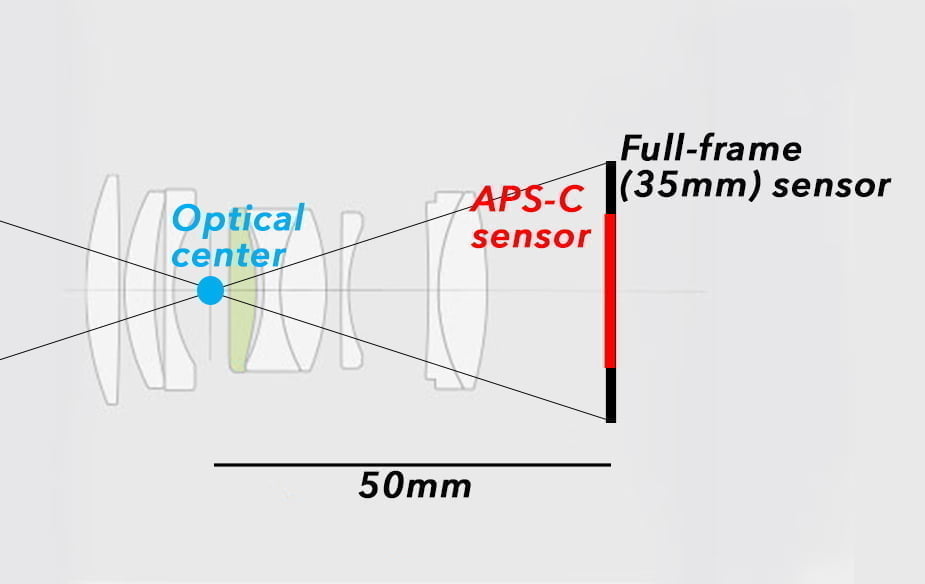
A short focal length would be something like 12mm, 16mm, or 24mm (wide-angle lenses). A long focal length would be 90mm, 200mm, or 400mm (telephoto lenses).
Now, knowing what focal length is, does the size of the sensor affect that measurement? No. Focal length is a characteristic of the lens, not the camera.
“I wish Fujifilm [or other APS-C camera] would name their lenses for the APS-C focal length and not the full-frame focal length” is a common sentiment among photographers.
Well, there is no such thing as an APS-C focal length and a full-frame focal length. It’s just focal length, regardless of the sensor size.
Focal length and field of view
What sensor size does affect is the field of view.
Look at this comparison of a 50mm lens with a full-frame sensor behind it and an APS-C sensor behind it.

It’s the same lens and the same focal length, but the APS-C sensor is capturing less of the image. It will appear to be “zoomed in” more because the edges are cropped off. This is a smaller field of view.
A smaller sensor will have more “cropped off” when compared to a full-frame sensor, which is known as the crop factor.
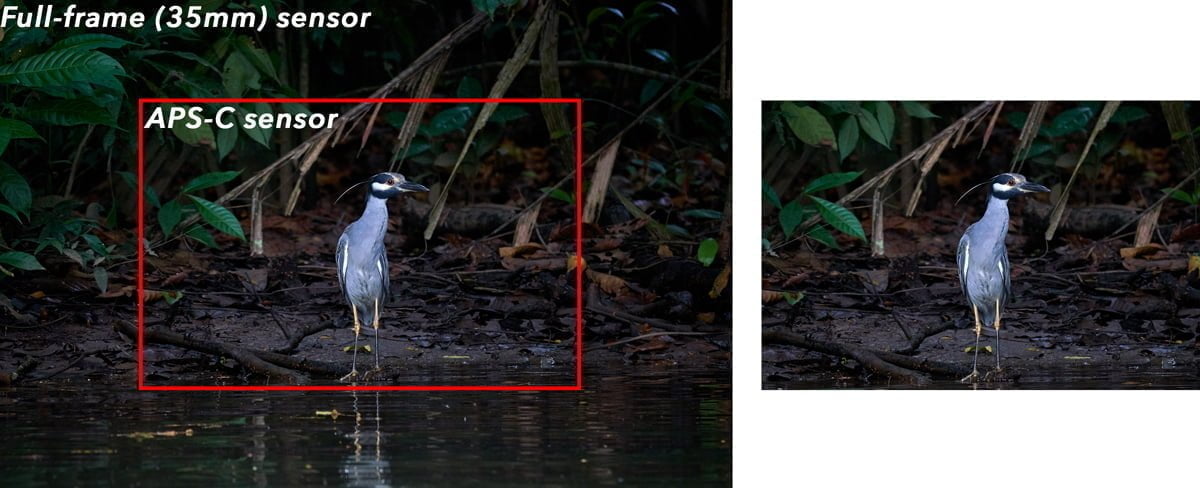
Crop factor equivalence
For a given focal length (or the same lens), smaller sensors will capture a smaller field of view than a full-frame sensor.
A 50mm lens on an APS-C camera, where the sensor is 1.5x smaller than a full-frame sensor, will capture a field of view equivalent to what a 75mm lens would capture on a full-frame camera.
That 50mm lens has an equivalent focal length of 75mm on that APS-C camera (50mm x 1.5). But this equivalence is based on the resulting field of view, not the focal length. The physical focal length is still 50mm.
Put that 50mm lens on a medium format camera, which will capture a larger field of view thanks to the larger sensor. Fujifilm GFX medium format cameras have a crop factor of 0.79x, meaning the 50mm lens has an equivalent focal length of 39.5mm. Or, a field of view equivalent to what a 39.5mm lens would capture on a full-frame camera. The physical focal length is still 50mm.
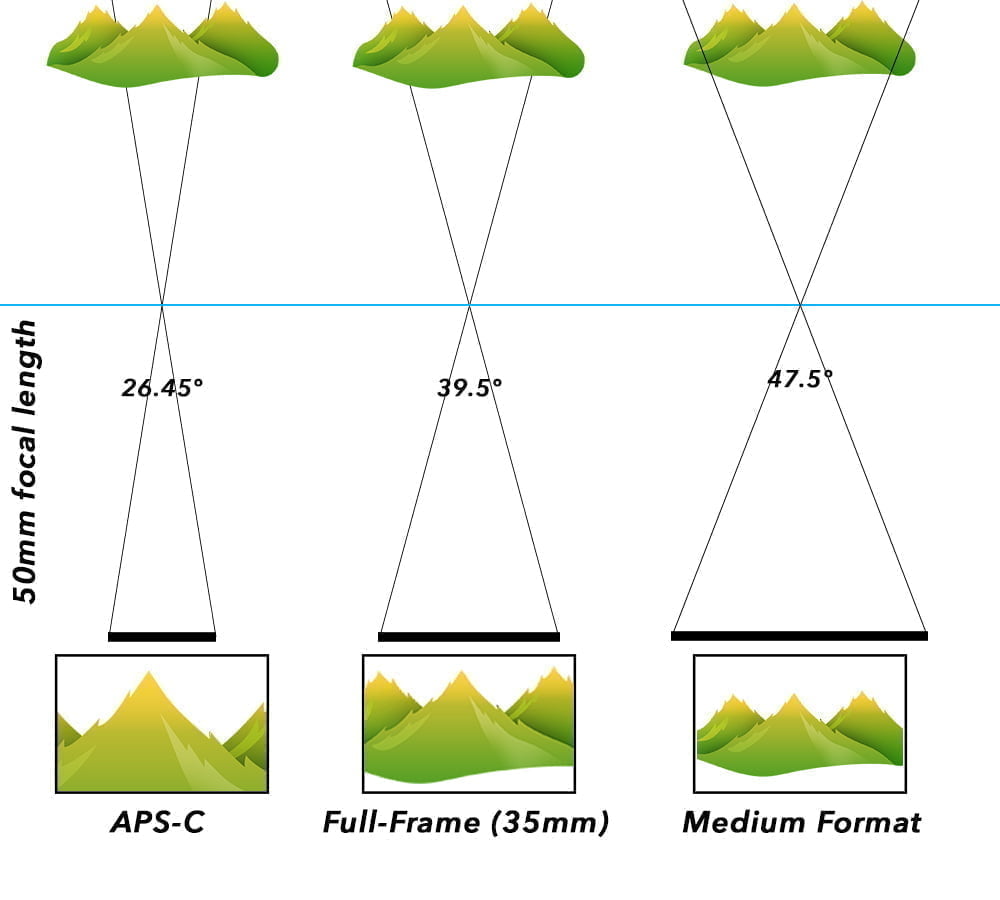
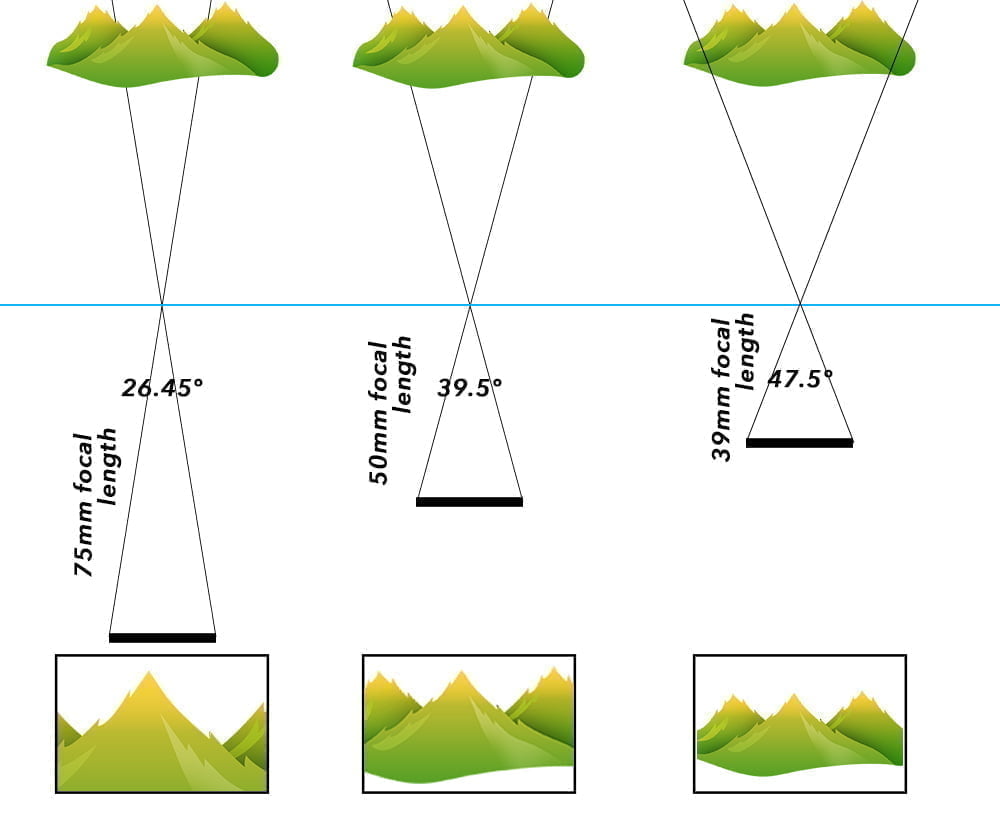
Not sure what your camera’s crop factor is? This Wikipedia article has a table of crop factors for most cameras.
Sensor size and lens size
A 50mm lens has a focal length of 50mm on a medium format camera, a full-frame camera, an APS-C camera, and a micro four-thirds (MFT) camera. So why is a 50mm lens designed for MFT so much smaller than a 50mm lens designed for medium format?
Think about the image area – the physical size of that sensor. The image that pops out the back of that medium-format lens needs to be much larger than the image that pops out of that MFT lens to ensure sensor coverage.
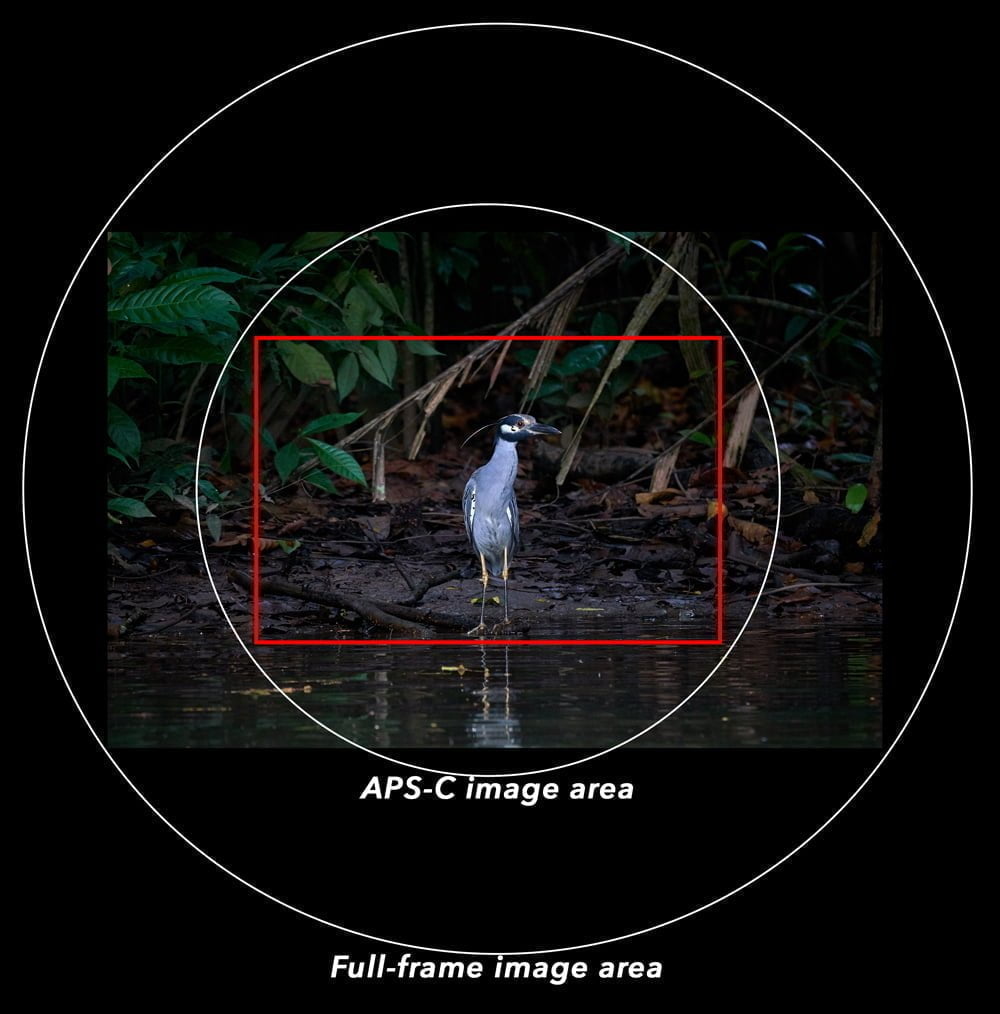
This requires a larger rear element, which requires larger glass and a larger diameter lens barrel. These will all contribute to increases in size, weight, and cost.
While somewhat related to focal length, the actual physical length of the lens has more to do with optical design and the number & type of glass elements included in the lens. Some 50mm lenses are much longer than other 50mm lenses, based on what the engineers decided to include to optimize sharpness and handle optical characteristics.
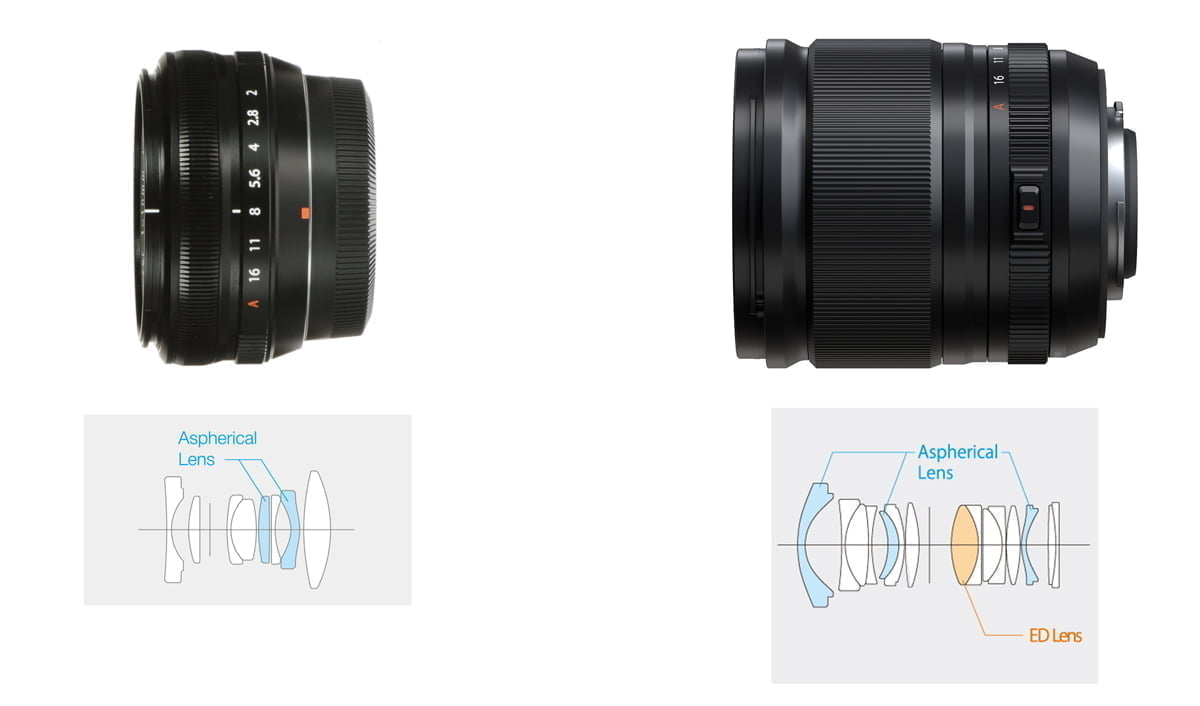
Aperture is related to focal length
The f-number that you adjust on your lens, like f/2, f/4, or f/11, refers to how much light the lens can gather. This is actually a ratio where the light-gathering capability is equal to the focal length divided by the diameter of the aperture opening.
Let’s look at a 50mm lens:
- An f-number of f/16 means the aperture opening is 3.125mm across (50mm/16).
- An f-number of f/11 means the aperture opening is 4.54mm across (50mm/11).
- An f-number of f/5.6 means the aperture opening is 8.93mm across (50mm/5.6).
- An f-number of f/2 means that the aperture opening is 25mm across (50mm/2).
- And so on…
On a 200mm lens, however, an f-number of f/5.6 means the aperture opening is 35.7mm in diameter. Compare that to an opening of only 8.93mm on a 50mm lens for f/5.6.
This shows that shorter focal lengths can gather more light for a given lens opening diameter. An aperture opening of 9mm in diameter would give you an f-number of f/2 on an 18mm lens and an f-number of f/6.3 on a 56mm lens. The 9mm opening wouldn’t let that 56mm lens pass as much light.

This is also why you don’t see telephoto lenses with really small f-numbers, like f/1.4 or f/2. A 600mm f/2 lens would require an opening diameter of 300mm (12 inches)!
What you really need to know about focal length
As long as you stay within the same camera system/sensor size, you shouldn’t be doing any math. Calculating equivalent focal lengths is more work than you need to do.
All that matters is that short focal lengths give you larger fields of view (wide-angle lenses), and long focal lengths give you smaller fields of view (telephoto lenses). It’s as simple as that. Don’t overcomplicate it by introducing crop factors.
Crop factors are more important if you’re working between different systems. If you love your 24mm lens when photographing landscapes on your full-frame Sony a9, and you just got an Olympus MFT, you’ll probably want to know which focal length will give you an equivalent field of view on that Olympus (it’s 12mm).
Or, you’ve been with the Fujifilm X APS-C system forever and are transitioning to the Fujifilm GFX medium format system. You’ll want to know which medium format focal lengths will give you the fields of view you were used to working with in that APS-C system.
There are depth-of-field implications between different sensor sizes also, but that’s a topic for another day. Again, it’s only necessary when going back and forth between systems.
Questions? Comments? Let me know below!

Rick Lowe
Tuesday 28th of November 2023
Maybe I am confused, but here is my question: I know that on an APS-C a 400 mm lens will have about the same field of view as a 600 mm full frame lens. But if what you’re after is a sharp close up of a stationary bird, are you actually getting more magnification from the APS-C 400 mm than a full-frame 400mm, or just a more cropped shot that looks like it’s more powerful?
John Peltier
Tuesday 28th of November 2023
It's just cropped. The smaller sensor isn't magnifying anything, it's just giving you a "tighter" field of view.
David Hampson
Tuesday 18th of July 2023
Loved this explanation, thank you.
John Peltier
Tuesday 18th of July 2023
Oh good! I appreciate the feedback.